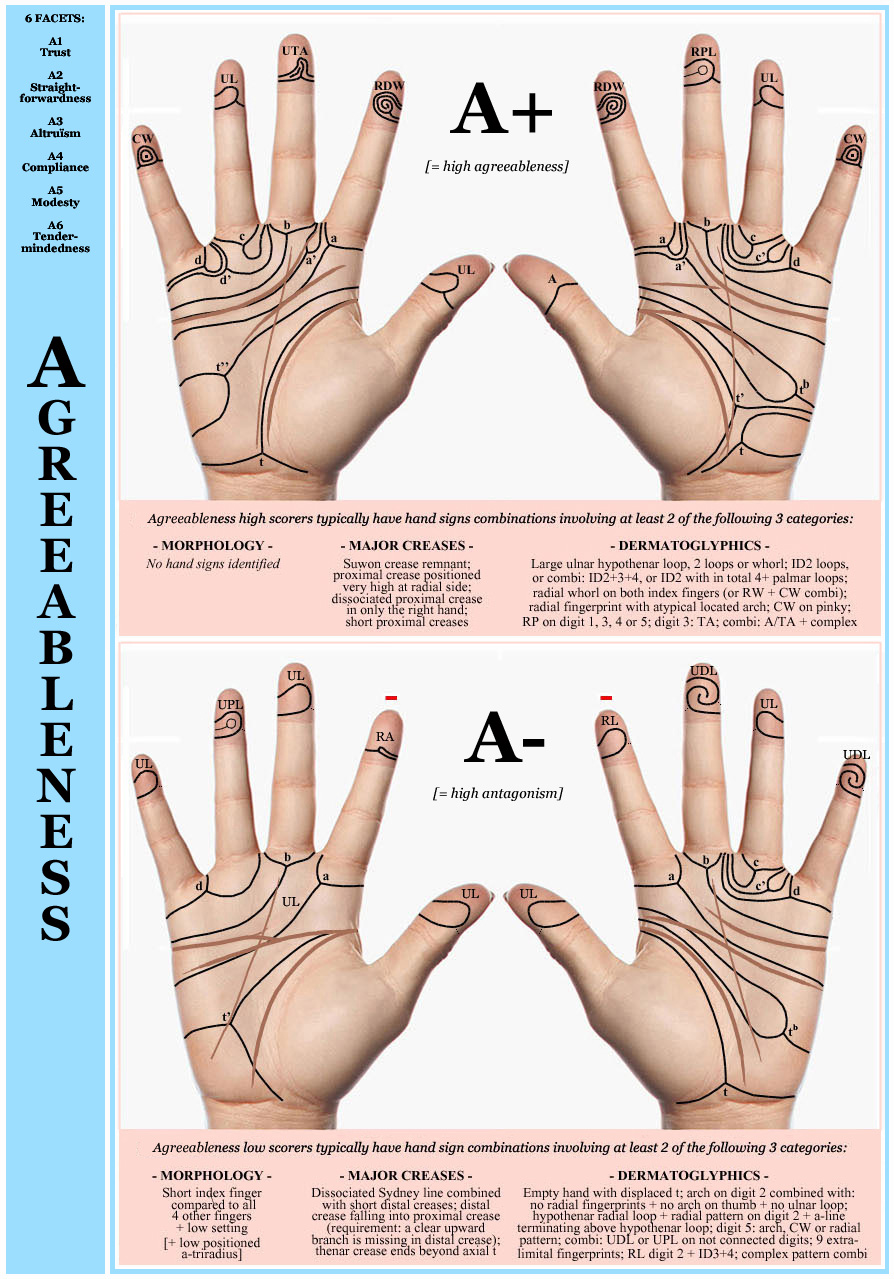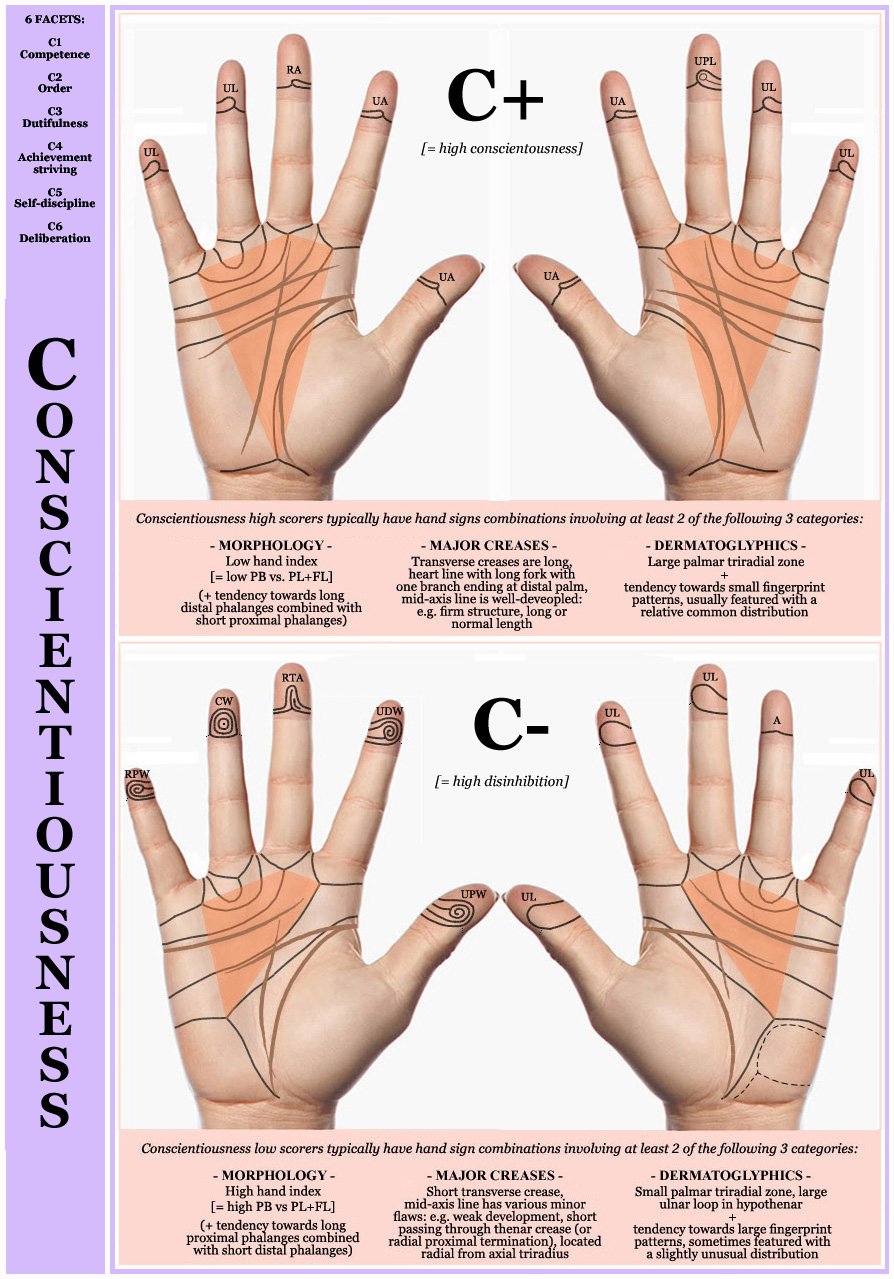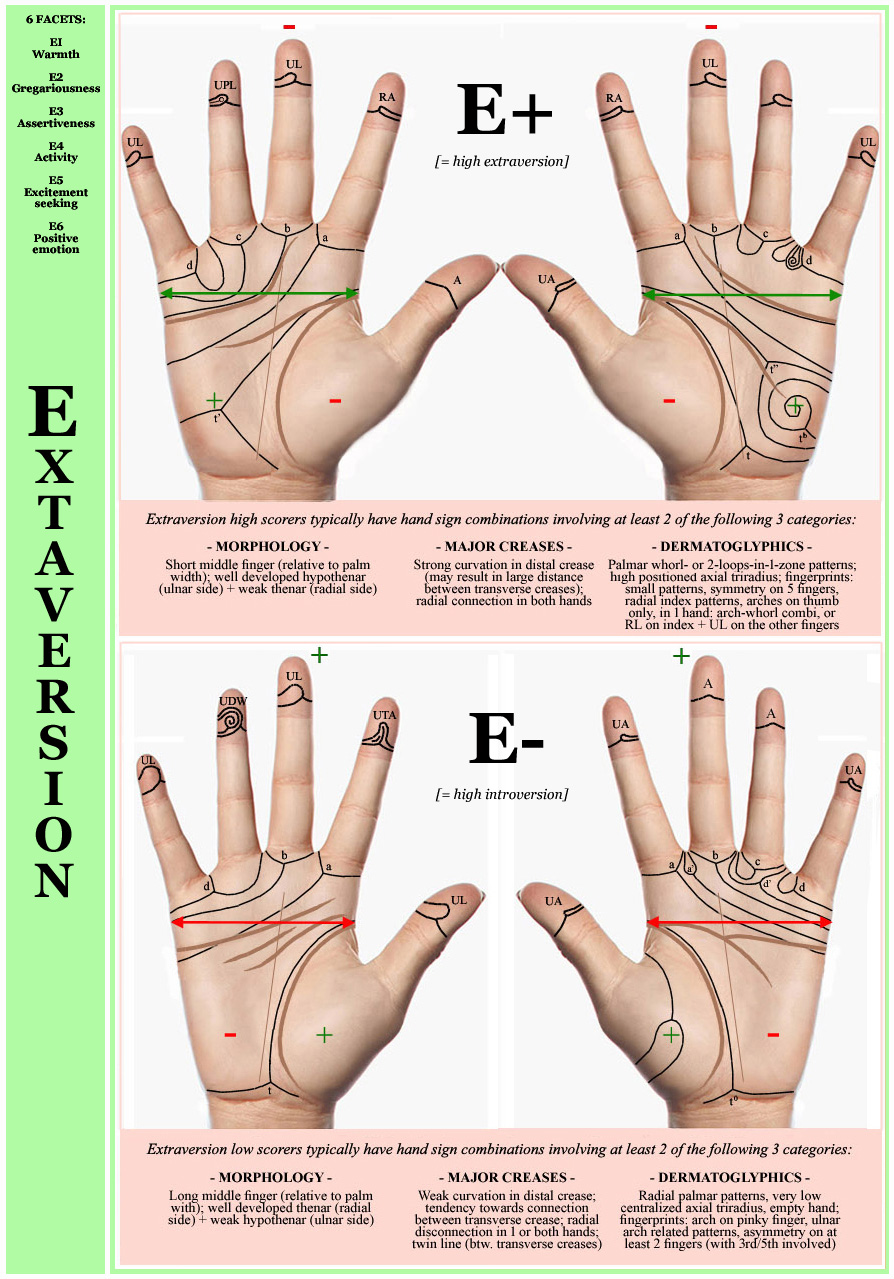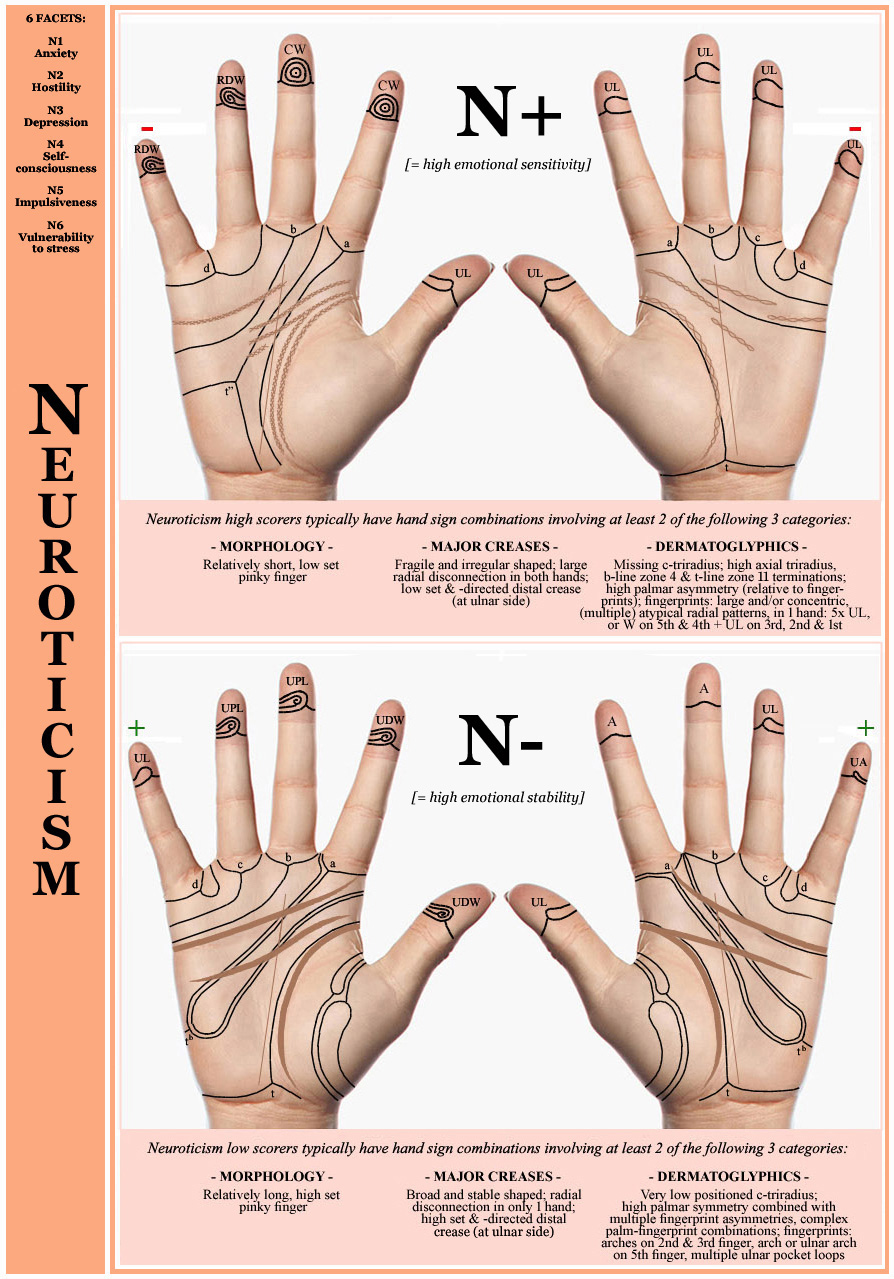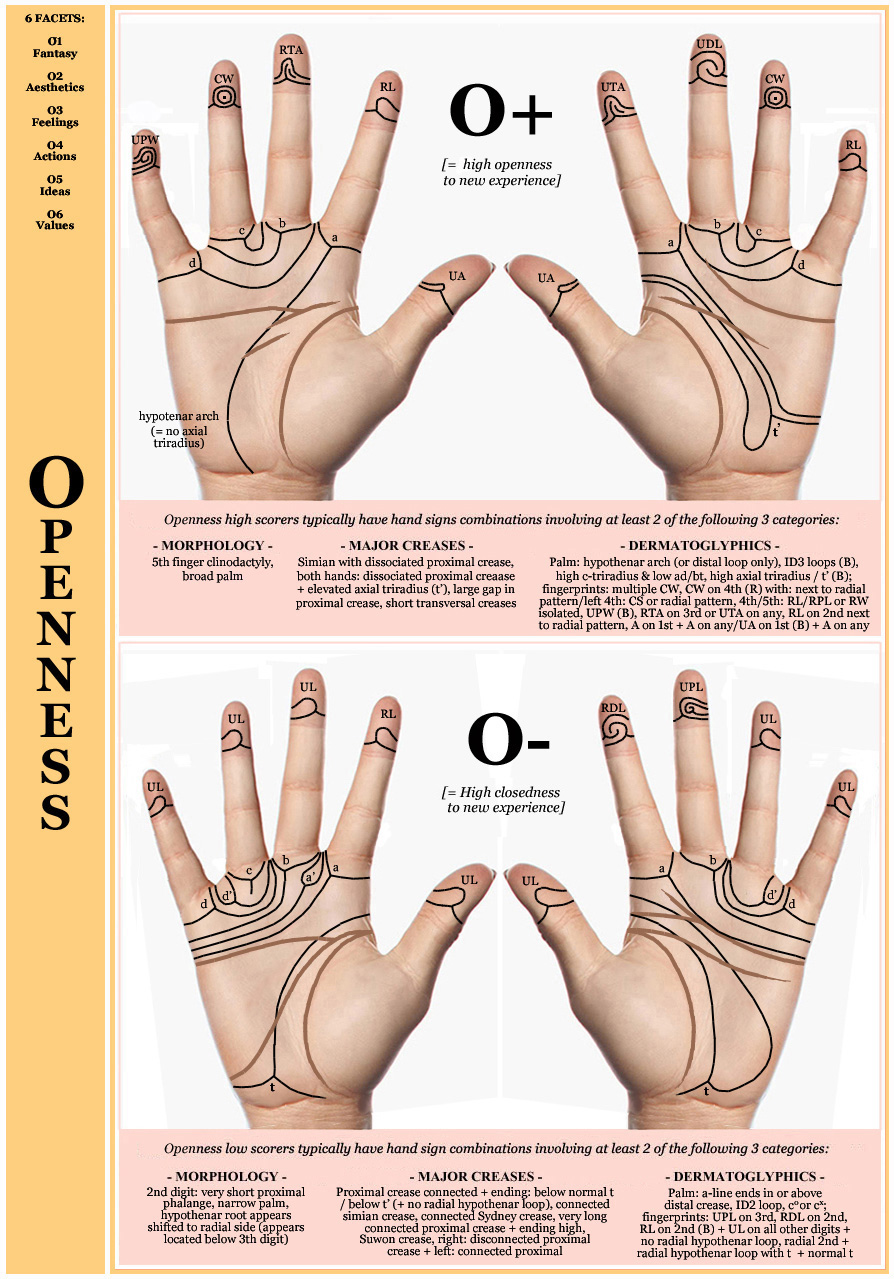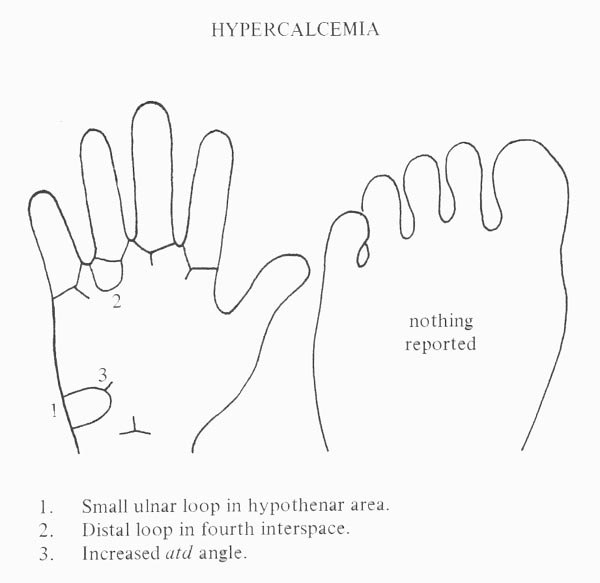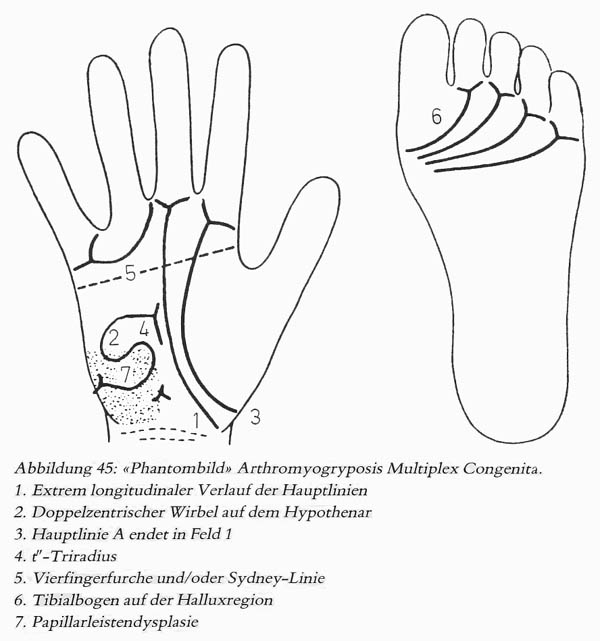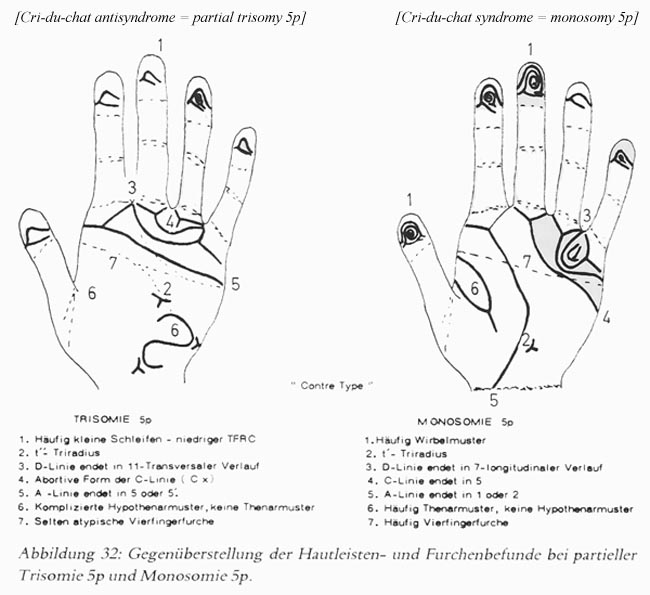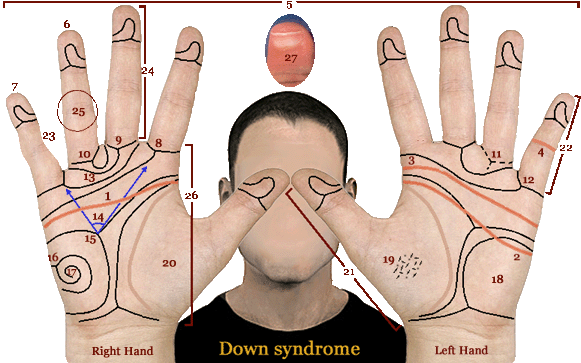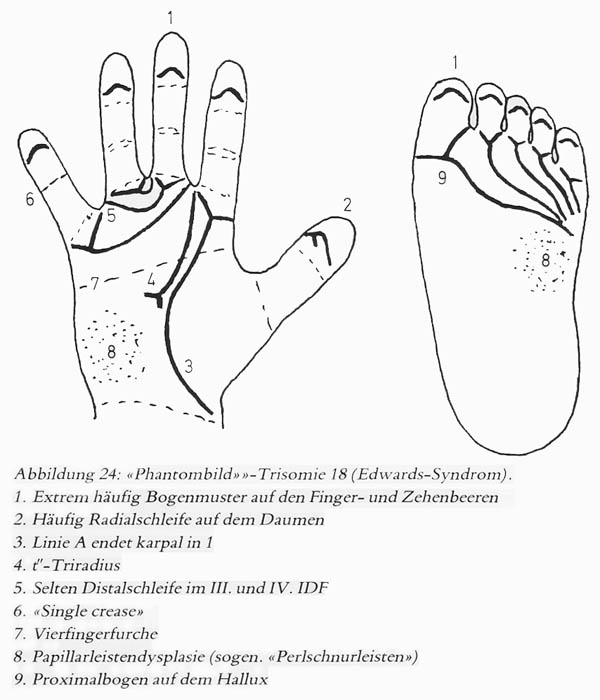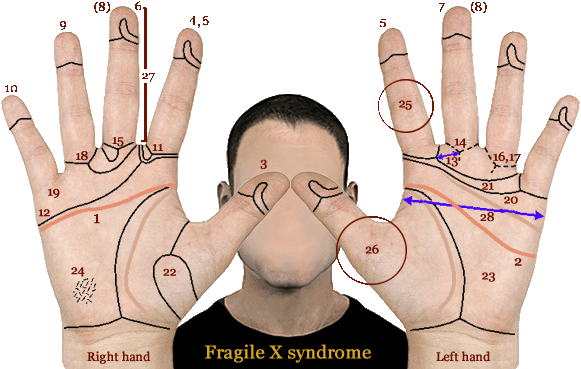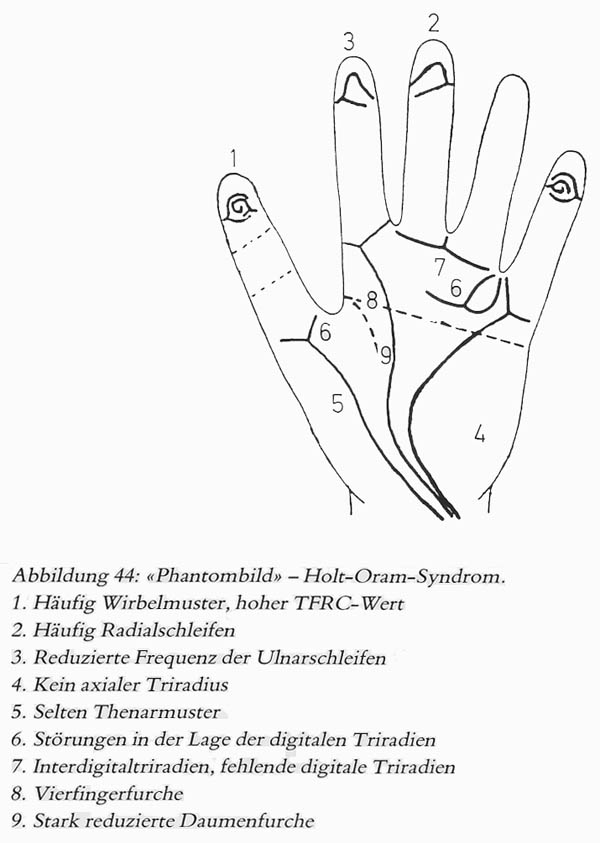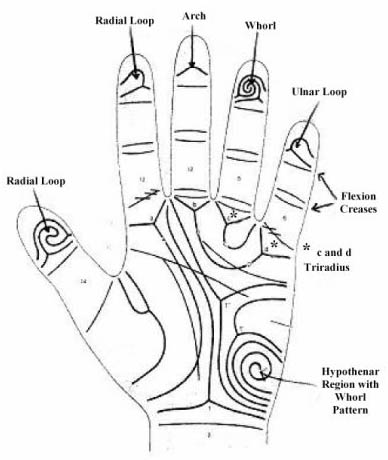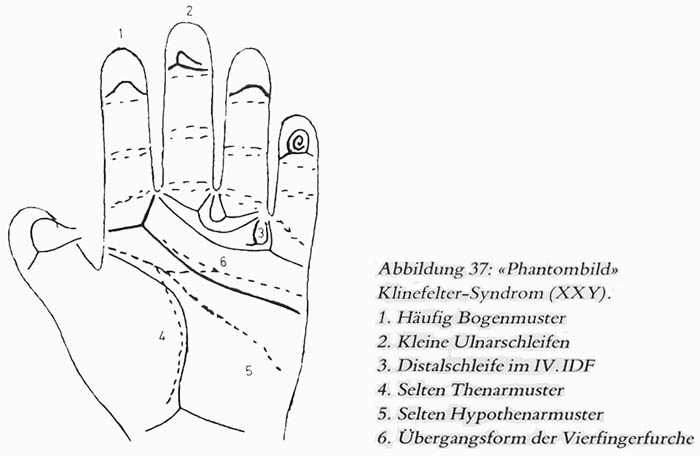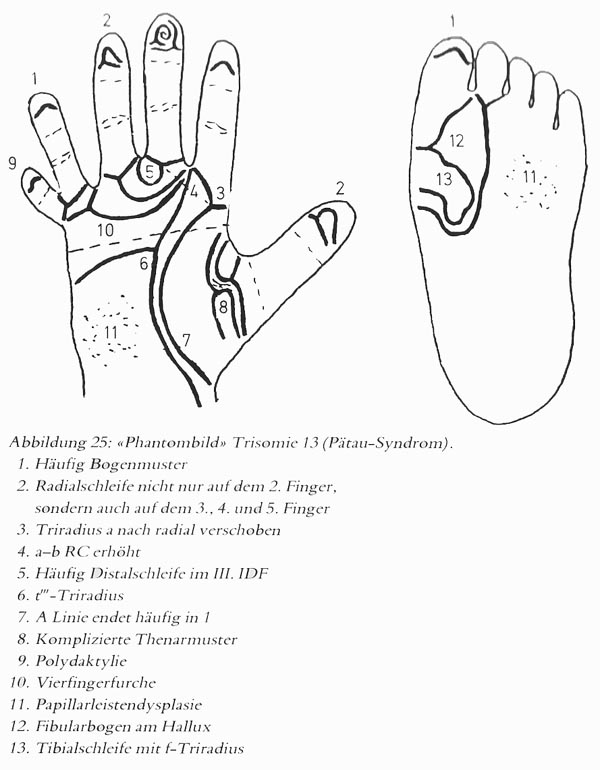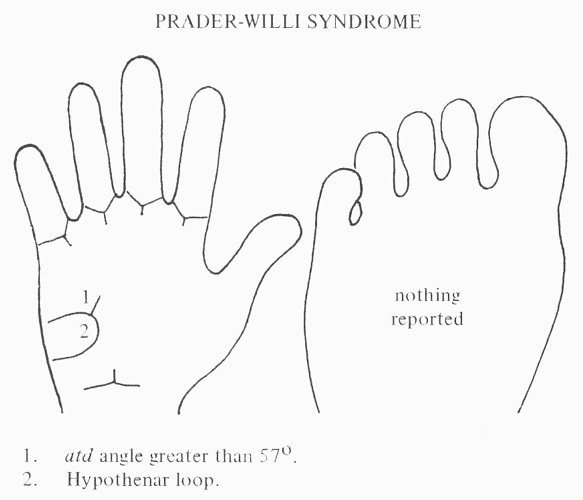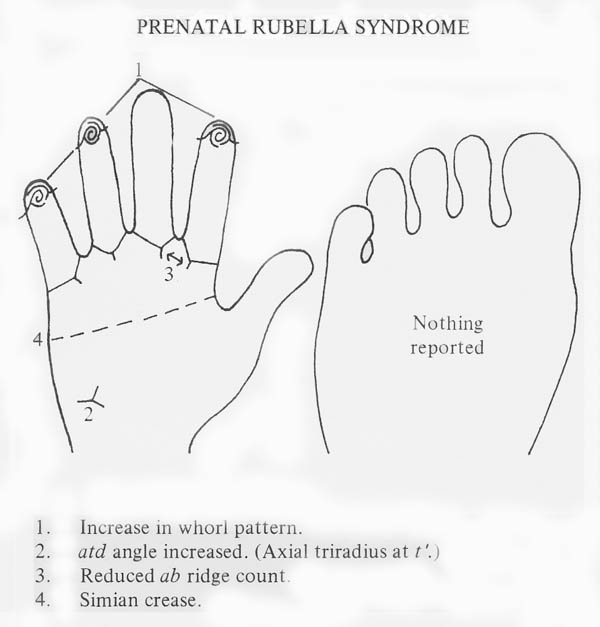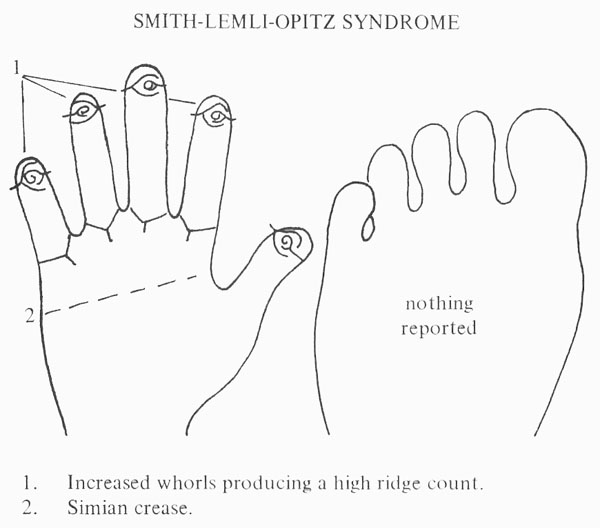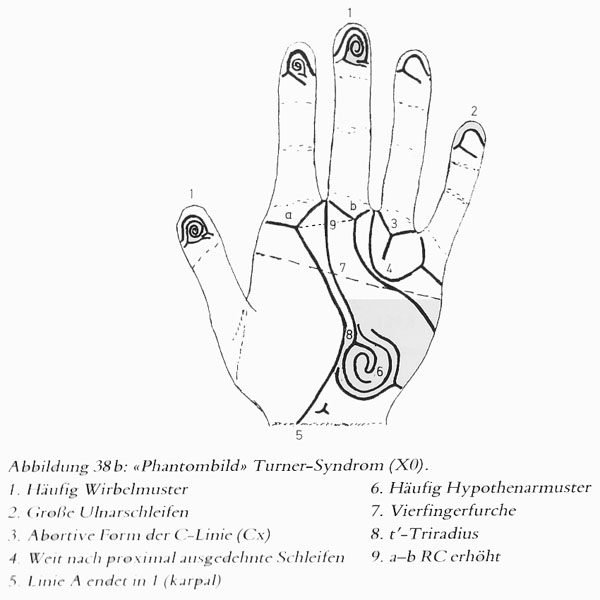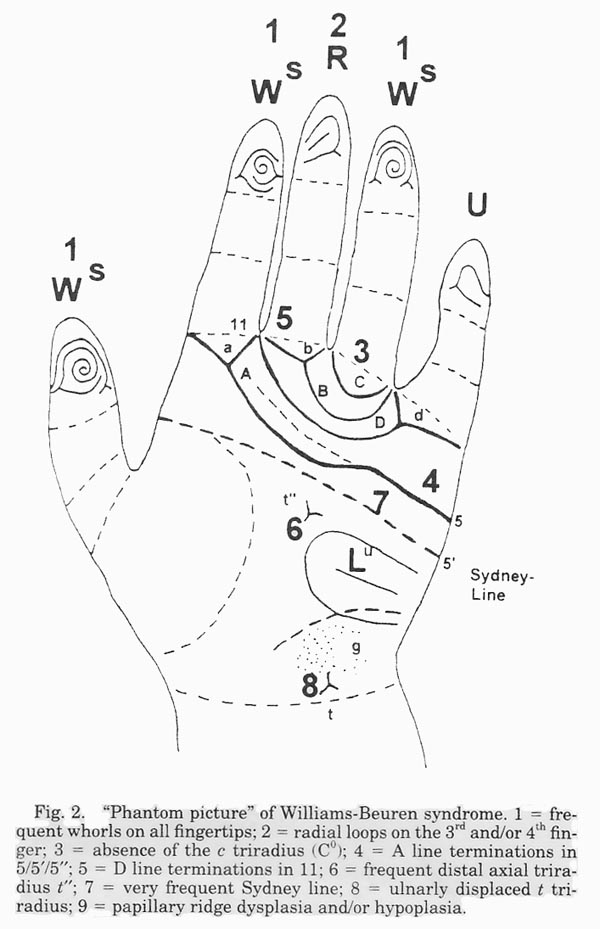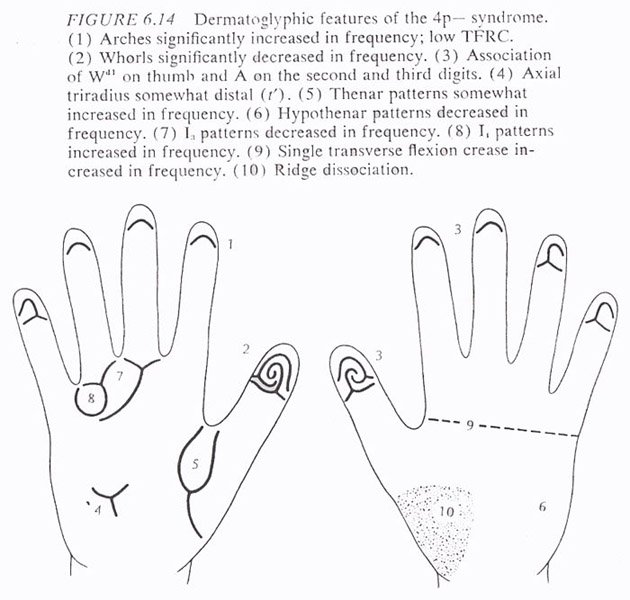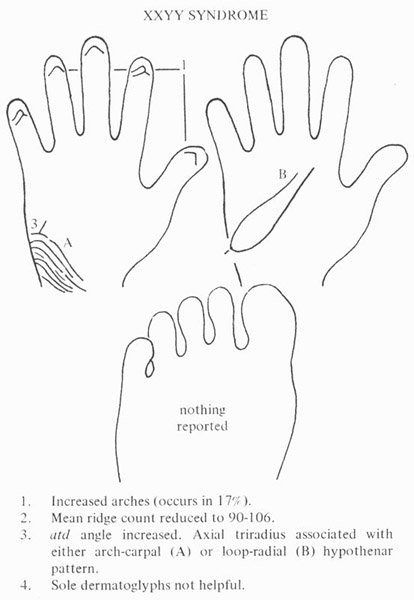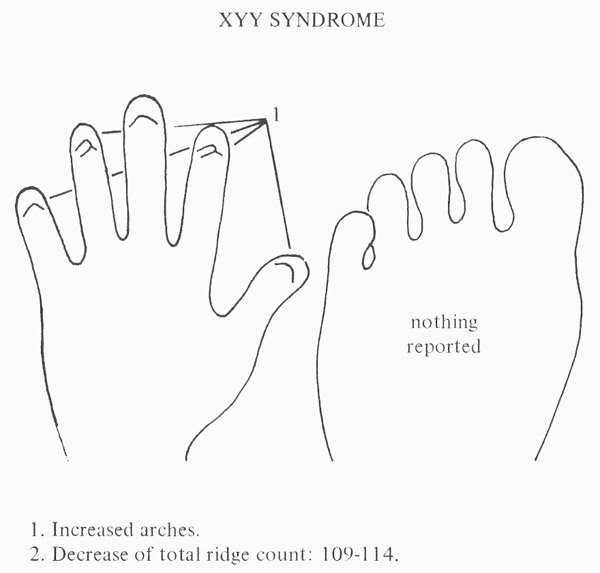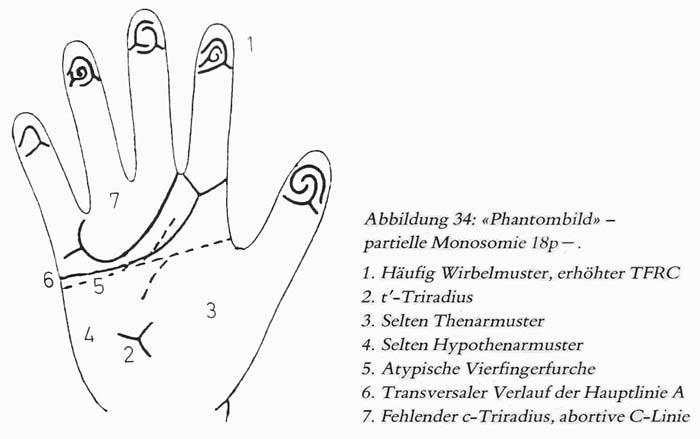
Scientific Hand Charts Collection:
Cornelia de Lange syndrome!
3 Hand Charts for Cornelia de Lange syndrome!
Cornelia de Lange syndrome - often termed Bushy Syndrome or Amsterdam dwarfism - is a very rare genetic disorder present from birth, but not always diagnosed at birth; it causes a range of physical, cognitive and medical challenges and affects both genders.
Prevalence: estimated at 1 in 15,000 live births.
Quite a few detailed hand charts are available for Cornelia de Lange syndrome; most charts describe the significance of various typical features inside especially the dermatoglyphics, which manifest often combined with a simian line (= single transverse flexion crease) and/or a single interphalangeal crease on the pinky finger.
NOTICE: Individual hand features described below should not get associated in isolation with any theme; only combinations involving multiple hand levels have potential for diagnostic purposes.
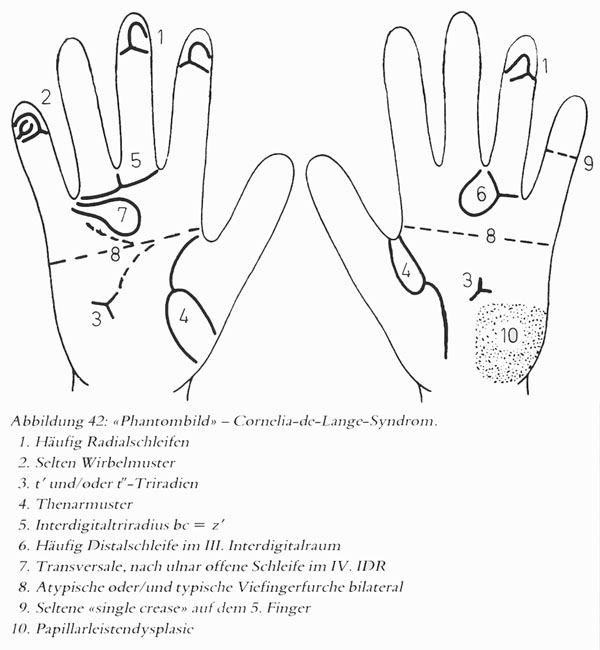
Hautleistenfibel (1981), p.112;
authors: A. Rodewald & H. Zankl
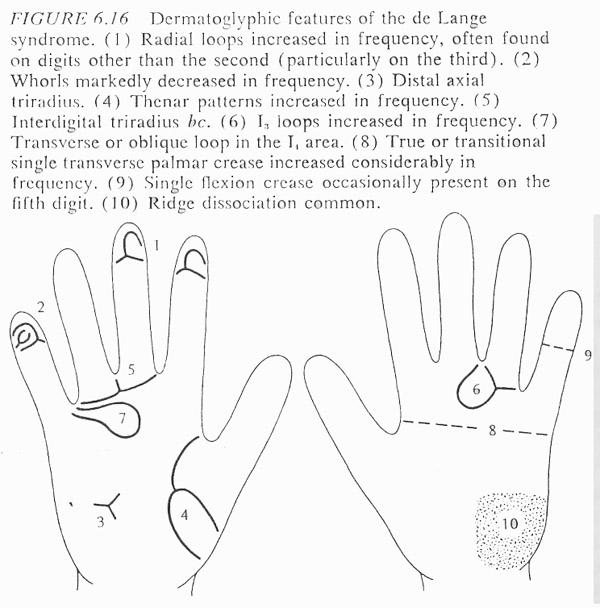
Dermatoglyphics in Medical Disorders (1976), p.197;
authors: B. Schaumann & M. Alter
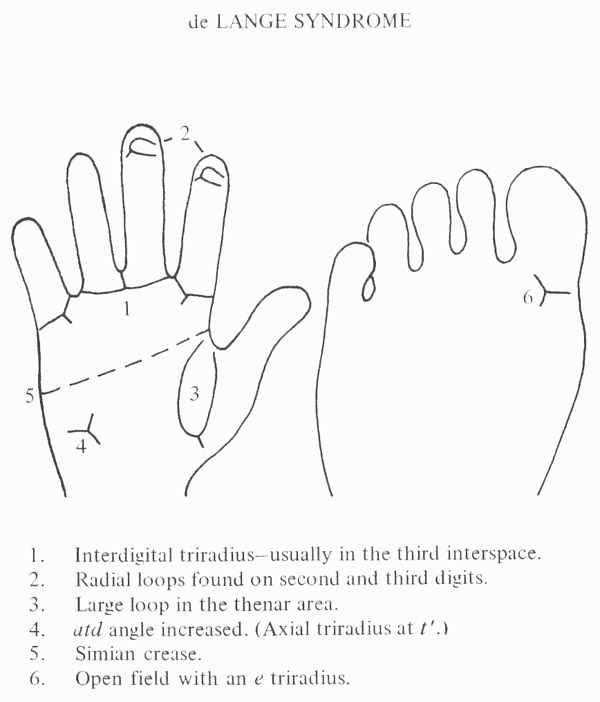
Handbook of Clinical Dermatoglyphs (1971), p.45;
authors: M.S. Elbualy & J.D. Schindeler
Other significant hand signs (not reported inside the hand charts):
In most infants with Cornelia de Lange syndrome, the hands show various mild defects such as: small hands for their size [micromelia]; the thumbs may be abnormally positioned - i.e. proximally placed; in addition, affected individuals may have short fingers that become smaller and thinner toward the ends (tapered fingers), fifth fingers that are permanently curved toward the ring finger (clinodactyly), and/or, in up to 30% absence of one or more fingers [oligodactyly] - see first picture below (source: NORD).
Hypoplasia of the medial phalanx of the fifth finger (or 2nd finger) and hypoplasia of the first metacarpal (resulting in a short, thick bone) is very specific for CdLS, and affects 90% of postnatally evaluated patients [Braddock et al., 1993].
A high proportion of the infants also has one or more structural defects; a summary of the most common variations has been described in the article Characterization of Limb Differences in Children With Cornelia de Lange Syndrome (2016).
Delayed motor development is also a typical feature - though fine motor skills are developed relatively well (source: Medscape).
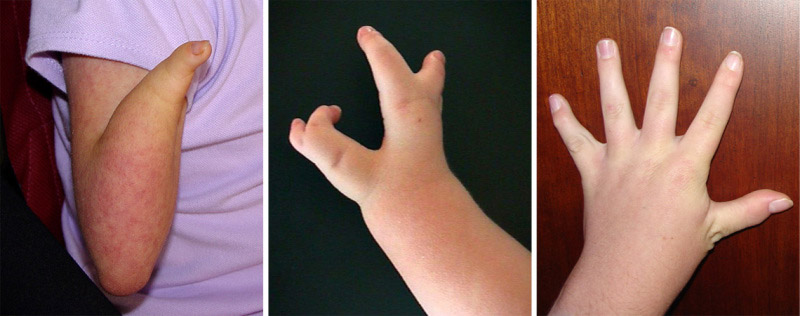
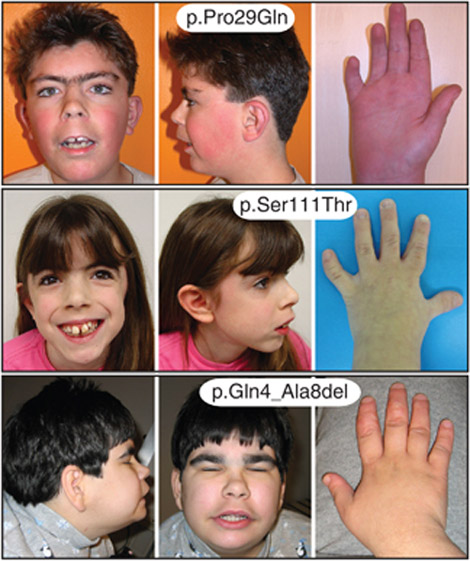
(source: European Journal of Medical Genetics).
All significant hand signs listed above for Cornelia de Lange syndrome together cover four out of the nine perspectives of the hand as defined according Multi-Perspective Hand Reading (including hand level 2, 5, 8 & 9).
A summary of the most significant hand sign combinations in Cornelia de Lange syndrome is described here:
Decoding the language of the hand:
hand sign combinations in Cornelia de Lange syndrome!
Hand charts are available for many other diagnostic issues;
start browsing HERE
![]() SCIENTIFIC HAND CHARTS: Introduction
SCIENTIFIC HAND CHARTS: Introduction
Hand charts for Big Five personality dimensions:
• Hand chart(s) for Agreeableness (2x: 1 in 4 people)
• Hand chart(s) for Conscientiousness (2x: 1 in 4 people)
• Hand chart(s) for Extraversion (2x: 1 in 4 people)
• Hand chart(s) Neuroticism (2x: 1 in 4 people)
• Hand chart(s) Openness (2x: 1 in 4 people)
Hand charts for diseases:
• Hand charts for hypercalcemia (1 in 4,000 people)
Hand charts for syndromes:
• Hand charts for arthrogryposis (1 in 10,000 people)
• Hand charts for cri-du-chat syndrome (1 in 30,000 people)
• Hand charts for Down syndrome (1 in 700 live births)
• Hand charts for Edwards syndrome (1 in 6,000 live births)
• Hand charts for fetal alcolhol syndrome (1 in 500 people)
• Hand charts for fragile-X syndrome (1 in 5,000 people)
• Hand charts for Holt-Oram syndrome (1 in 100,000 live b.)
• Hand charts for Kabuki syndrome (1 in 32,000 people)
• Hand charts for Klinefelter syndrome (1 in 1000 males)
• Hand charts for de Lange syndrome (1 in 15,000 live births)
• Hand charts for Marfan syndrome (1 in 5,000 people)
• Hand charts for Patau syndrome (1 in 15,000 live births)
• Hand charts for Prader-Willi syndrome (1 in 15,000 births)
• Hand charts for Rubella syndrome (1 in 100,000 people)
• Hand charts for Rubinstein syndrome (1 in 200,000 births)
• Hand charts for SLOS (1 in 40,000 births)
• Hand charts for Turner syndrome (1 in 2,000 female births)
• Hand charts for Warkany syndrome (1 in 200,000 births)
• Hand charts for Williams syndrome (1 in 14,000 births)
• Hand charts for Wolf-Hirschhorn syndrome (1 in 50,000 b.)
• Hand charts for XXYY syndrome (1 in 30,000 male births)
• Hand charts for XYY syndrome (1 in 1,000 male births)
• Hand charts for 18 deletion syndromes (2 in 40,000 live b.)
NOTICE: Reflexology hand charts are not included in this section because the scientific foundation of any of such charts is actually unknown; nevertheless, you can read more about the fundamentals of such charts HERE.
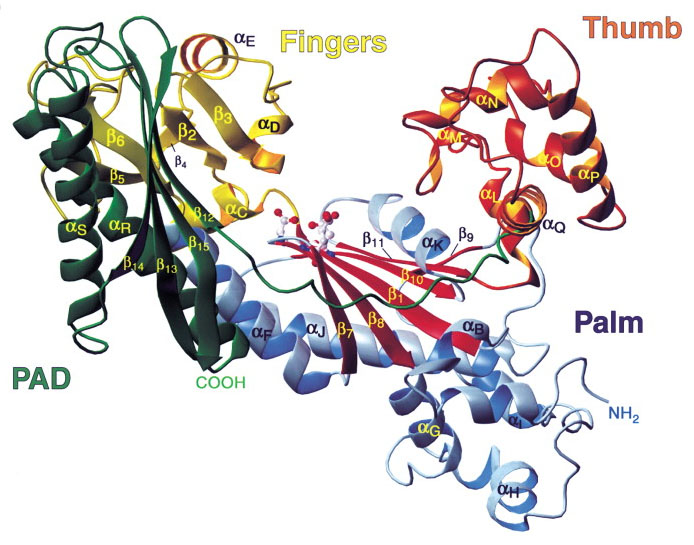
Other charts & maps:
• Fingerprints world map
• Hand reading experts world map
• Hand reflexology charts
